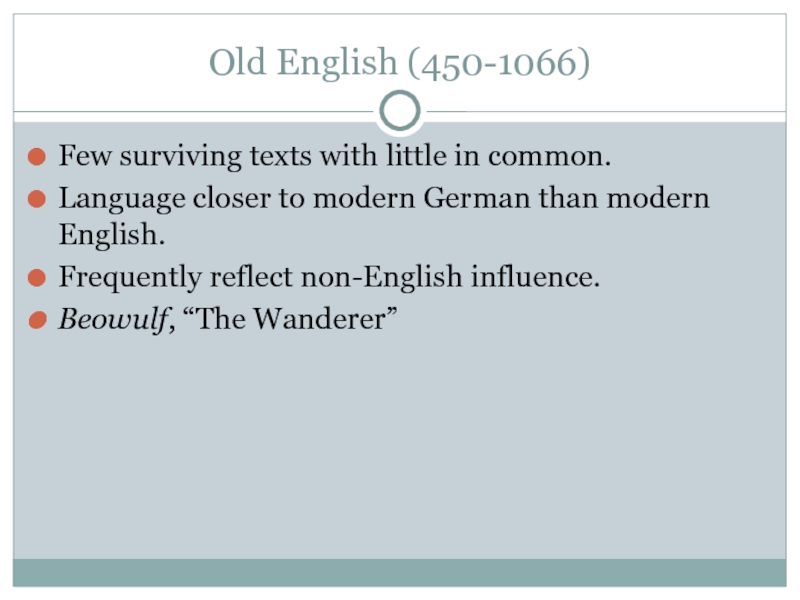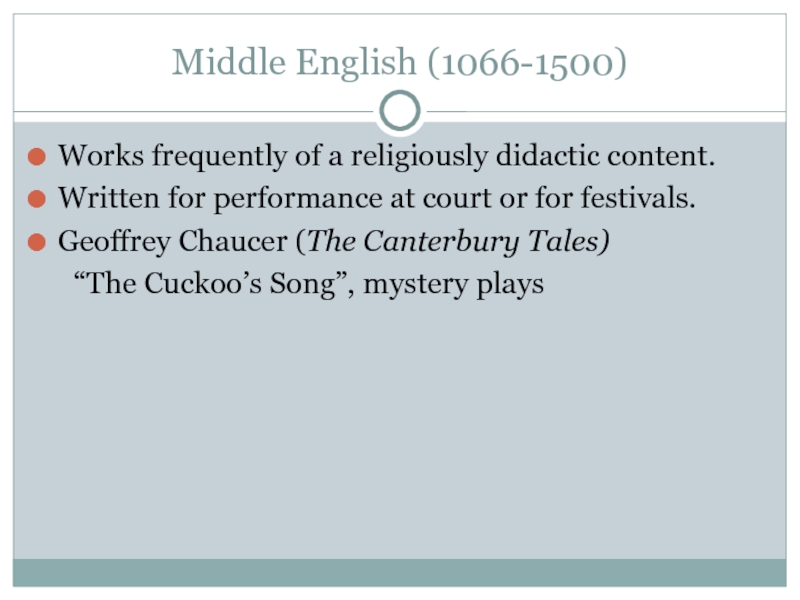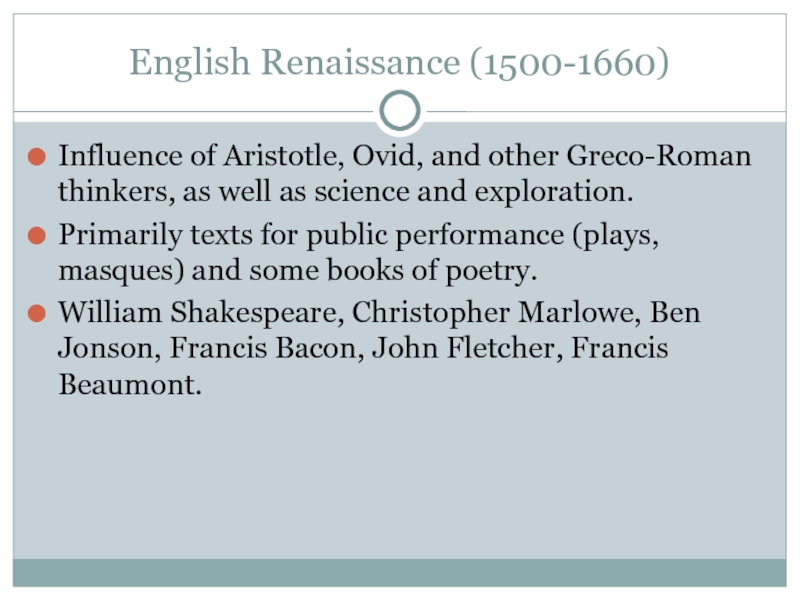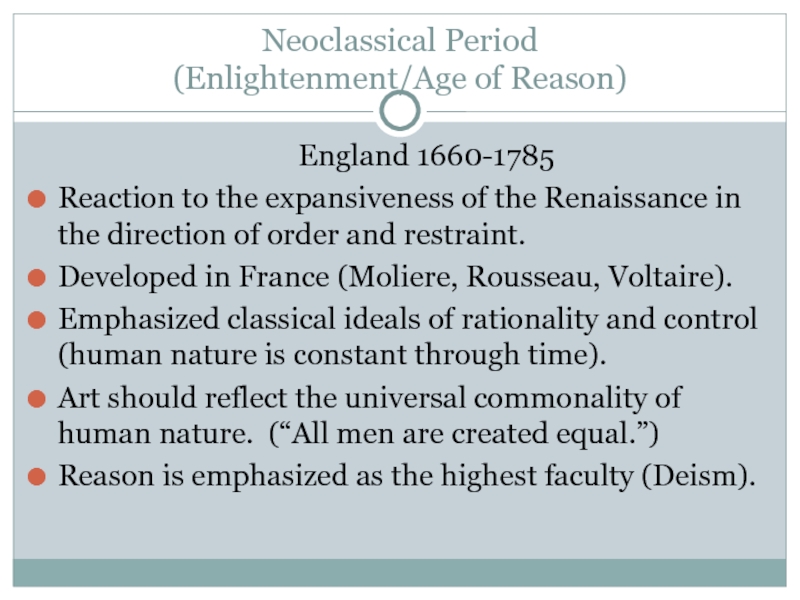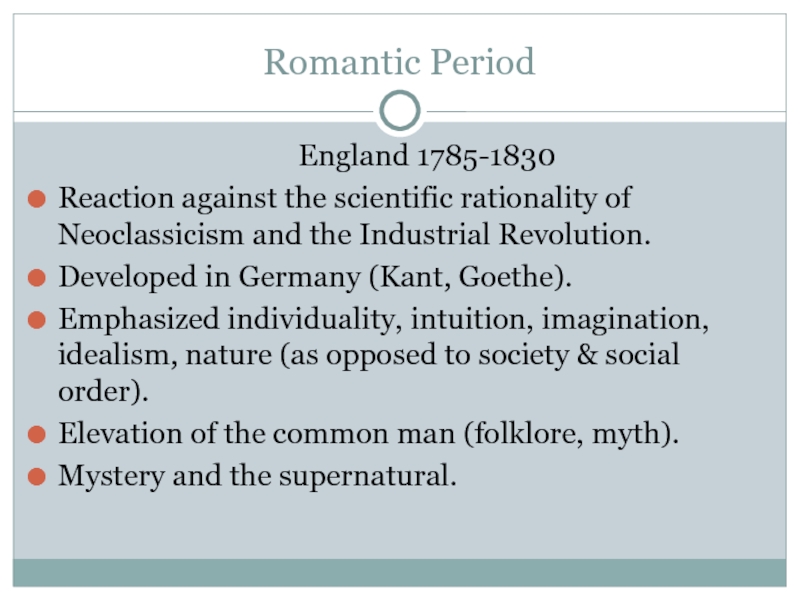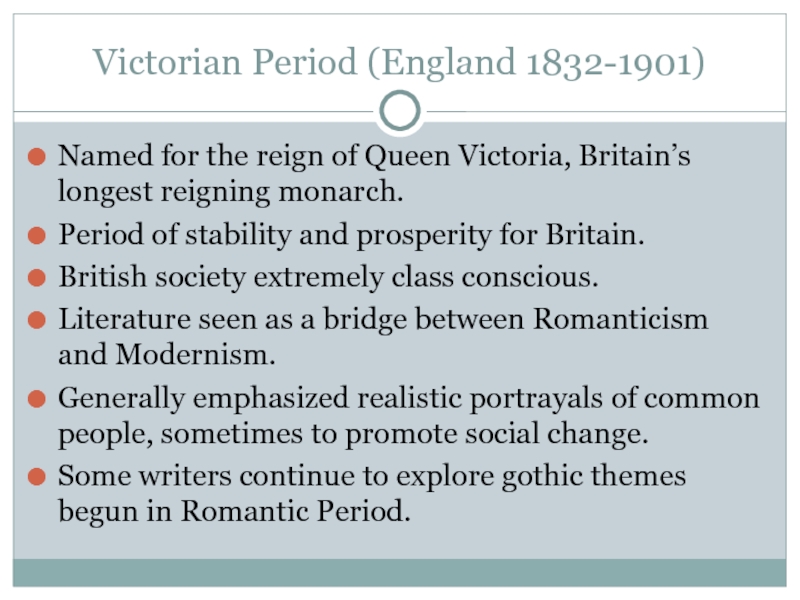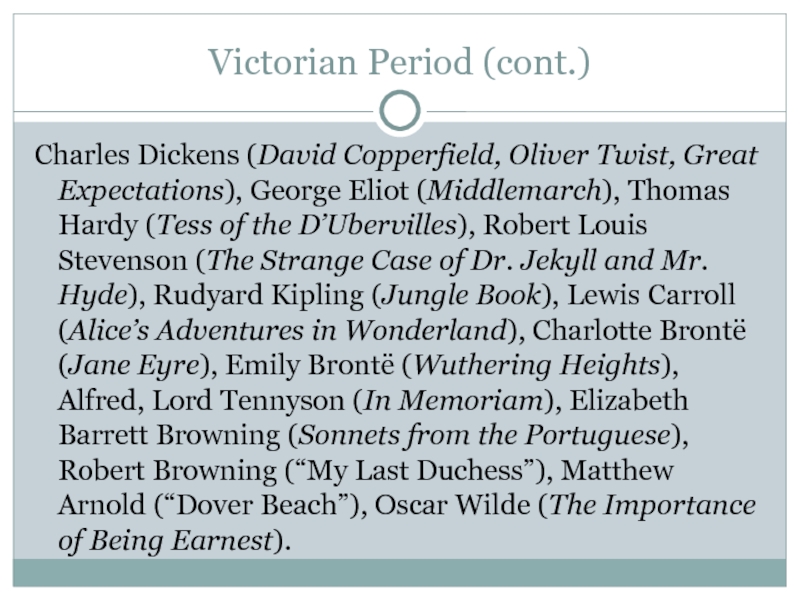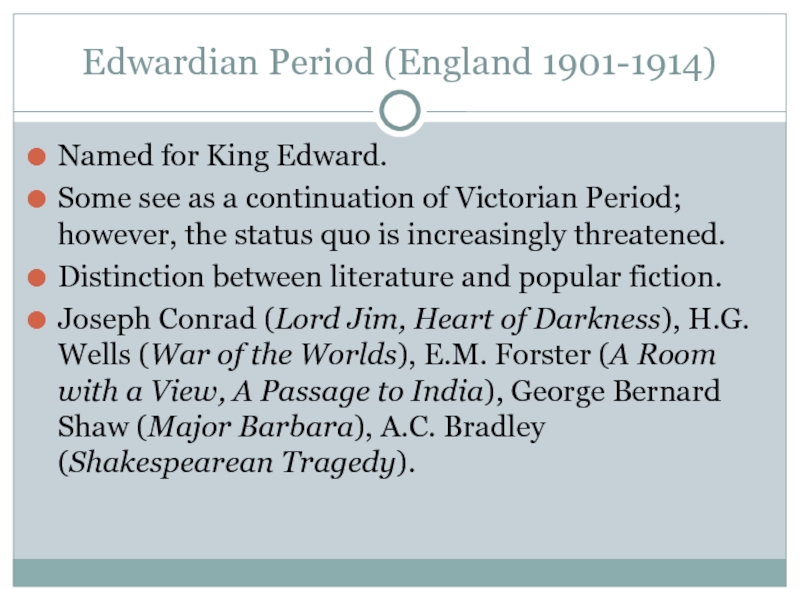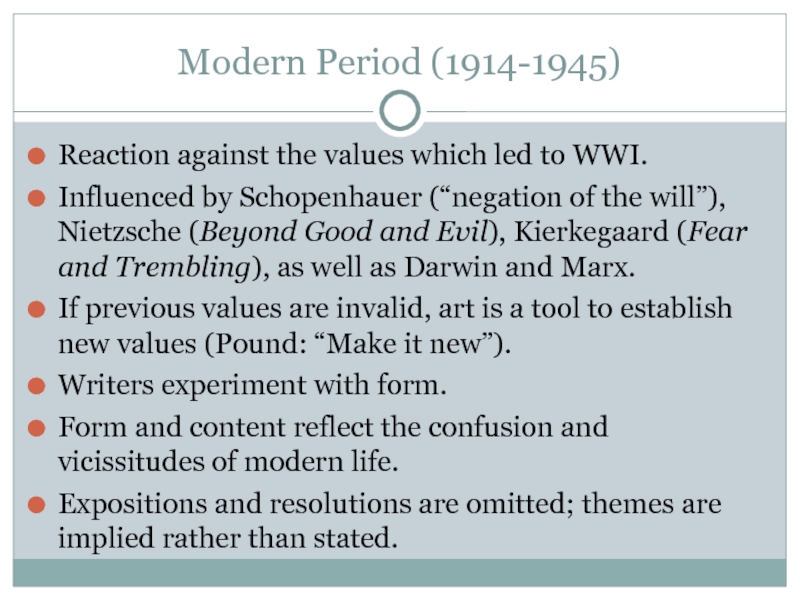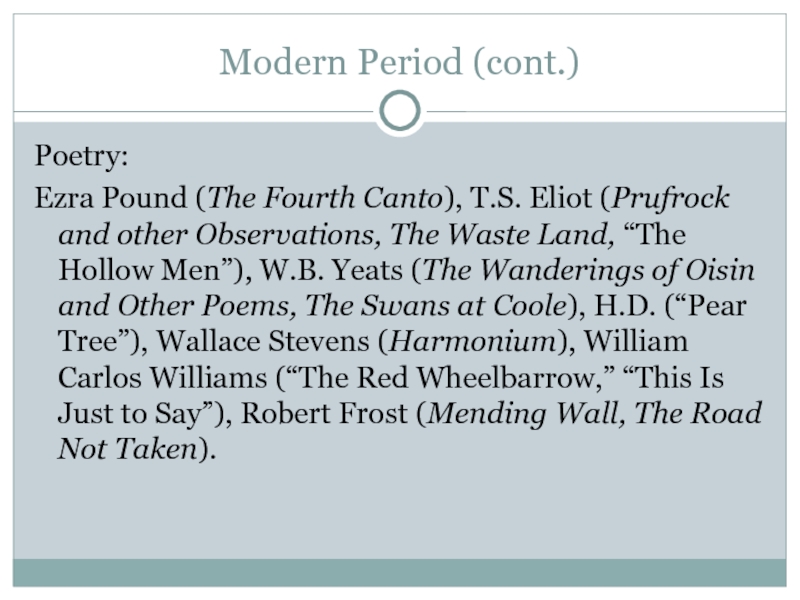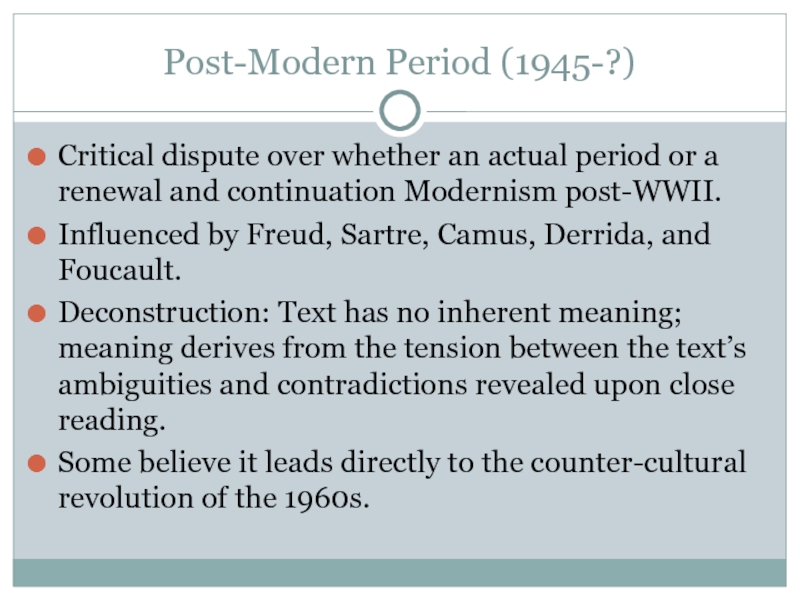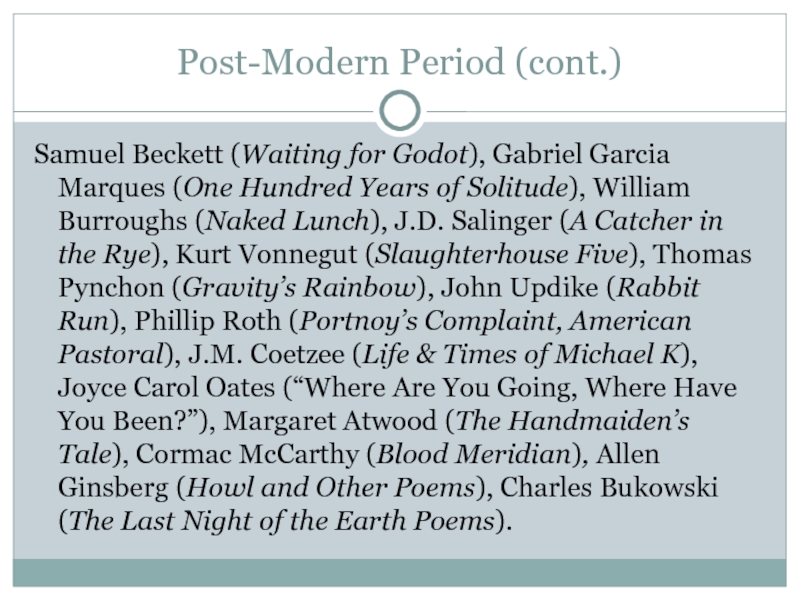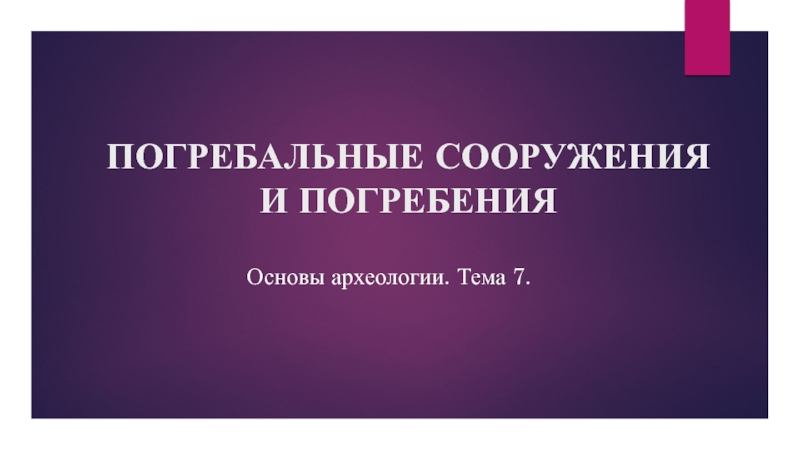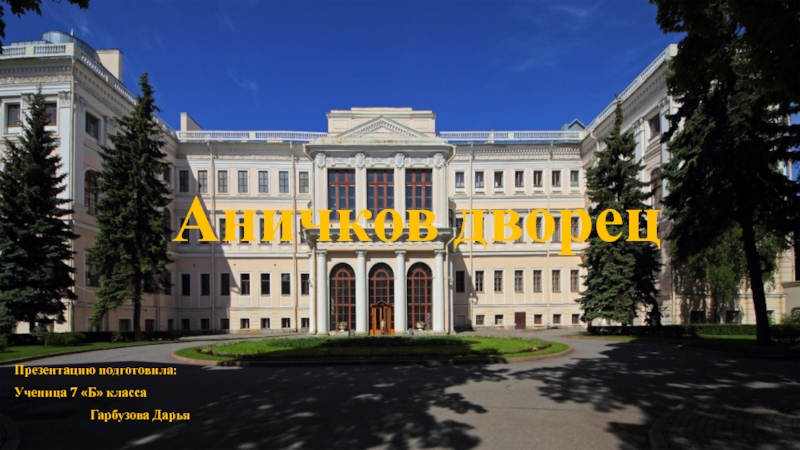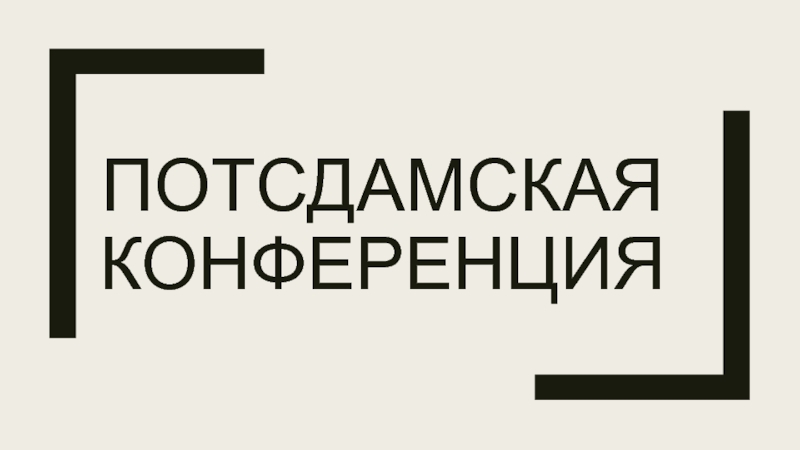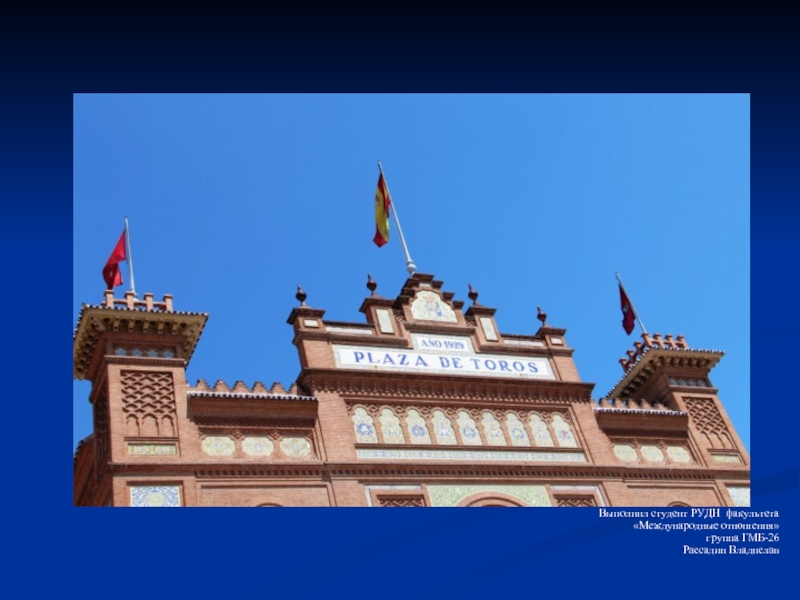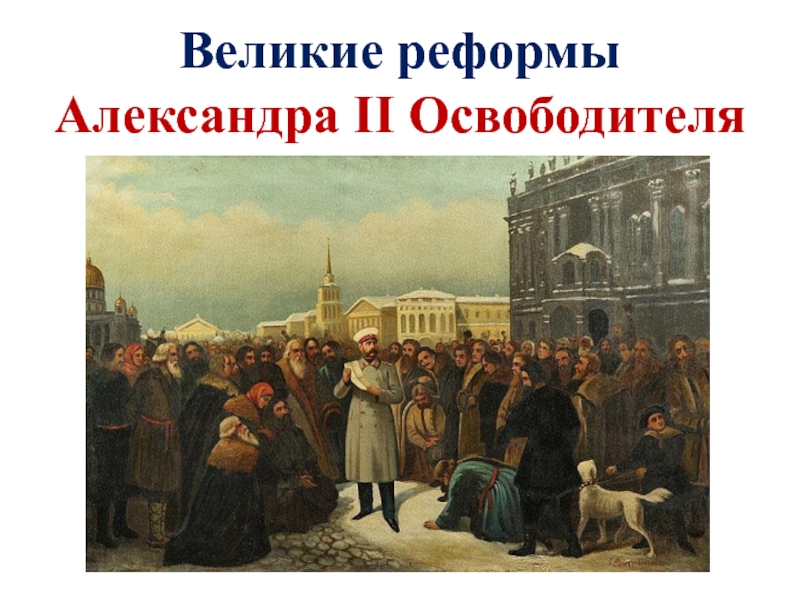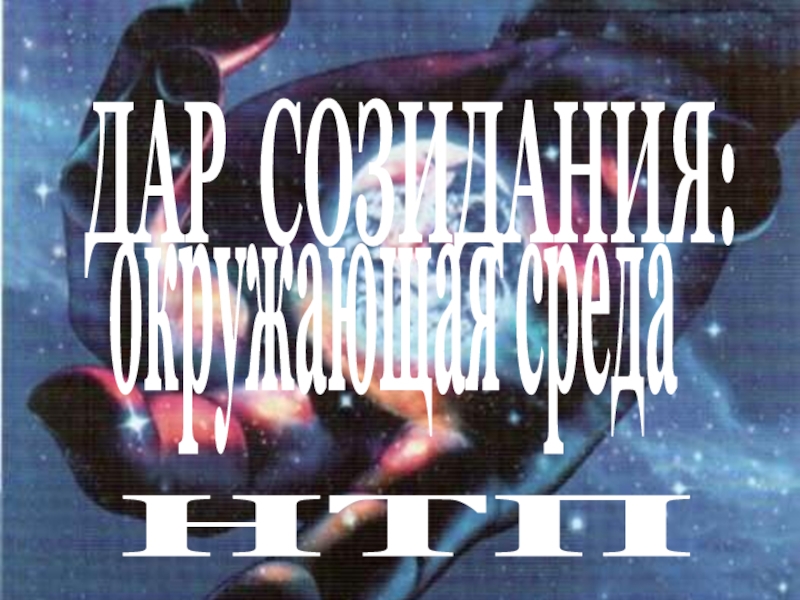modern German than modern English.
Frequently reflect non-English influence.
Beowulf, “The Wanderer”
- Главная
- Разное
- Дизайн
- Бизнес и предпринимательство
- Аналитика
- Образование
- Развлечения
- Красота и здоровье
- Финансы
- Государство
- Путешествия
- Спорт
- Недвижимость
- Армия
- Графика
- Культурология
- Еда и кулинария
- Лингвистика
- Английский язык
- Астрономия
- Алгебра
- Биология
- География
- Детские презентации
- Информатика
- История
- Литература
- Маркетинг
- Математика
- Медицина
- Менеджмент
- Музыка
- МХК
- Немецкий язык
- ОБЖ
- Обществознание
- Окружающий мир
- Педагогика
- Русский язык
- Технология
- Физика
- Философия
- Химия
- Шаблоны, картинки для презентаций
- Экология
- Экономика
- Юриспруденция
Old English (450-1066) презентация
Содержание
- 1. Old English (450-1066)
- 2. Middle English (1066-1500) Works frequently of a
- 3. English Renaissance (1500-1660) Influence of Aristotle, Ovid,
- 4. Neoclassical Period (Enlightenment/Age of Reason) England 1660-1785
- 5. Romantic Period England 1785-1830 Reaction against the
- 6. Victorian Period (England 1832-1901) Named for the
- 7. Victorian Period (cont.) Charles Dickens (David Copperfield,
- 8. Edwardian Period (England 1901-1914) Named for King
- 9. Modern Period (1914-1945) Reaction against the values
- 10. Modern Period (cont.) Poetry: Ezra Pound (The
- 11. Modern Period (cont.) Fiction: James Joyce (Dubliners,
- 12. Post-Modern Period (1945-?) Critical dispute over
- 13. Post-Modern Period (cont.) Samuel Beckett (Waiting for
Слайд 2Middle English (1066-1500)
Works frequently of a religiously didactic content.
Written for performance
at court or for festivals.
Geoffrey Chaucer (The Canterbury Tales)
“The Cuckoo’s Song”, mystery plays
Geoffrey Chaucer (The Canterbury Tales)
“The Cuckoo’s Song”, mystery plays
Слайд 3English Renaissance (1500-1660)
Influence of Aristotle, Ovid, and other Greco-Roman thinkers, as
well as science and exploration.
Primarily texts for public performance (plays, masques) and some books of poetry.
William Shakespeare, Christopher Marlowe, Ben Jonson, Francis Bacon, John Fletcher, Francis Beaumont.
Primarily texts for public performance (plays, masques) and some books of poetry.
William Shakespeare, Christopher Marlowe, Ben Jonson, Francis Bacon, John Fletcher, Francis Beaumont.
Слайд 4Neoclassical Period
(Enlightenment/Age of Reason)
England 1660-1785
Reaction to the expansiveness of the Renaissance
in the direction of order and restraint.
Developed in France (Moliere, Rousseau, Voltaire).
Emphasized classical ideals of rationality and control (human nature is constant through time).
Art should reflect the universal commonality of human nature. (“All men are created equal.”)
Reason is emphasized as the highest faculty (Deism).
Developed in France (Moliere, Rousseau, Voltaire).
Emphasized classical ideals of rationality and control (human nature is constant through time).
Art should reflect the universal commonality of human nature. (“All men are created equal.”)
Reason is emphasized as the highest faculty (Deism).
Слайд 5Romantic Period
England 1785-1830
Reaction against the scientific rationality of Neoclassicism and the
Industrial Revolution.
Developed in Germany (Kant, Goethe).
Emphasized individuality, intuition, imagination, idealism, nature (as opposed to society & social order).
Elevation of the common man (folklore, myth).
Mystery and the supernatural.
Developed in Germany (Kant, Goethe).
Emphasized individuality, intuition, imagination, idealism, nature (as opposed to society & social order).
Elevation of the common man (folklore, myth).
Mystery and the supernatural.
Слайд 6Victorian Period (England 1832-1901)
Named for the reign of Queen Victoria, Britain’s
longest reigning monarch.
Period of stability and prosperity for Britain.
British society extremely class conscious.
Literature seen as a bridge between Romanticism and Modernism.
Generally emphasized realistic portrayals of common people, sometimes to promote social change.
Some writers continue to explore gothic themes begun in Romantic Period.
Period of stability and prosperity for Britain.
British society extremely class conscious.
Literature seen as a bridge between Romanticism and Modernism.
Generally emphasized realistic portrayals of common people, sometimes to promote social change.
Some writers continue to explore gothic themes begun in Romantic Period.
Слайд 7Victorian Period (cont.)
Charles Dickens (David Copperfield, Oliver Twist, Great Expectations), George
Eliot (Middlemarch), Thomas Hardy (Tess of the D’Ubervilles), Robert Louis Stevenson (The Strange Case of Dr. Jekyll and Mr. Hyde), Rudyard Kipling (Jungle Book), Lewis Carroll (Alice’s Adventures in Wonderland), Charlotte Brontë (Jane Eyre), Emily Brontë (Wuthering Heights), Alfred, Lord Tennyson (In Memoriam), Elizabeth Barrett Browning (Sonnets from the Portuguese), Robert Browning (“My Last Duchess”), Matthew Arnold (“Dover Beach”), Oscar Wilde (The Importance of Being Earnest).
Слайд 8Edwardian Period (England 1901-1914)
Named for King Edward.
Some see as a continuation
of Victorian Period; however, the status quo is increasingly threatened.
Distinction between literature and popular fiction.
Joseph Conrad (Lord Jim, Heart of Darkness), H.G. Wells (War of the Worlds), E.M. Forster (A Room with a View, A Passage to India), George Bernard Shaw (Major Barbara), A.C. Bradley (Shakespearean Tragedy).
Distinction between literature and popular fiction.
Joseph Conrad (Lord Jim, Heart of Darkness), H.G. Wells (War of the Worlds), E.M. Forster (A Room with a View, A Passage to India), George Bernard Shaw (Major Barbara), A.C. Bradley (Shakespearean Tragedy).
Слайд 9Modern Period (1914-1945)
Reaction against the values which led to WWI.
Influenced by
Schopenhauer (“negation of the will”), Nietzsche (Beyond Good and Evil), Kierkegaard (Fear and Trembling), as well as Darwin and Marx.
If previous values are invalid, art is a tool to establish new values (Pound: “Make it new”).
Writers experiment with form.
Form and content reflect the confusion and vicissitudes of modern life.
Expositions and resolutions are omitted; themes are implied rather than stated.
If previous values are invalid, art is a tool to establish new values (Pound: “Make it new”).
Writers experiment with form.
Form and content reflect the confusion and vicissitudes of modern life.
Expositions and resolutions are omitted; themes are implied rather than stated.
Слайд 10Modern Period (cont.)
Poetry:
Ezra Pound (The Fourth Canto), T.S. Eliot (Prufrock and
other Observations, The Waste Land, “The Hollow Men”), W.B. Yeats (The Wanderings of Oisin and Other Poems, The Swans at Coole), H.D. (“Pear Tree”), Wallace Stevens (Harmonium), William Carlos Williams (“The Red Wheelbarrow,” “This Is Just to Say”), Robert Frost (Mending Wall, The Road Not Taken).
Слайд 11Modern Period (cont.)
Fiction:
James Joyce (Dubliners, A Portrait of the Artist as
a Young Man), Franz Kafka (The Metamorphosis, The Trial, The Castle), Ernest Hemingway (In Our Time, The Sun Also Rises), William Faulkner (As I Lay Dying, The Sound and the Fury), F. Scott Fitzgerald (The Great Gatsby), John Steinbeck (The Grapes of Wrath), Thornton Wilder (Our Town, The Bridge at San Luis Rey), D.H. Lawrence (The Rainbow), Virginia Woolf (Mrs. Dalloway, To the Lighthouse).
Слайд 12Post-Modern Period (1945-?)
Critical dispute over whether an actual period or
a renewal and continuation Modernism post-WWII.
Influenced by Freud, Sartre, Camus, Derrida, and Foucault.
Deconstruction: Text has no inherent meaning; meaning derives from the tension between the text’s ambiguities and contradictions revealed upon close reading.
Some believe it leads directly to the counter-cultural revolution of the 1960s.
Influenced by Freud, Sartre, Camus, Derrida, and Foucault.
Deconstruction: Text has no inherent meaning; meaning derives from the tension between the text’s ambiguities and contradictions revealed upon close reading.
Some believe it leads directly to the counter-cultural revolution of the 1960s.
Слайд 13Post-Modern Period (cont.)
Samuel Beckett (Waiting for Godot), Gabriel Garcia Marques (One
Hundred Years of Solitude), William Burroughs (Naked Lunch), J.D. Salinger (A Catcher in the Rye), Kurt Vonnegut (Slaughterhouse Five), Thomas Pynchon (Gravity’s Rainbow), John Updike (Rabbit Run), Phillip Roth (Portnoy’s Complaint, American Pastoral), J.M. Coetzee (Life & Times of Michael K), Joyce Carol Oates (“Where Are You Going, Where Have You Been?”), Margaret Atwood (The Handmaiden’s Tale), Cormac McCarthy (Blood Meridian), Allen Ginsberg (Howl and Other Poems), Charles Bukowski (The Last Night of the Earth Poems).
